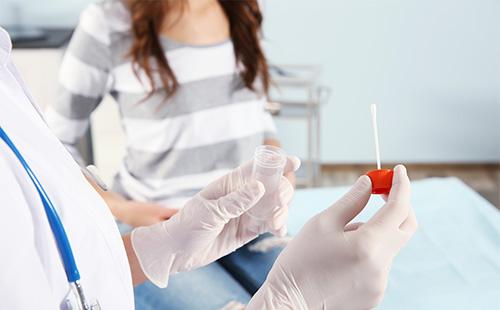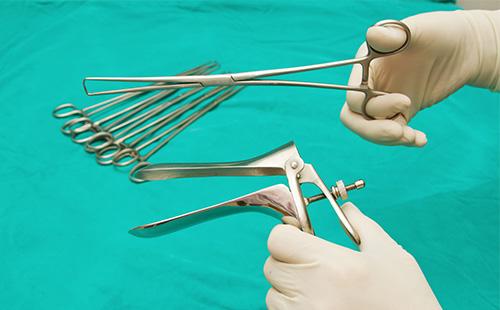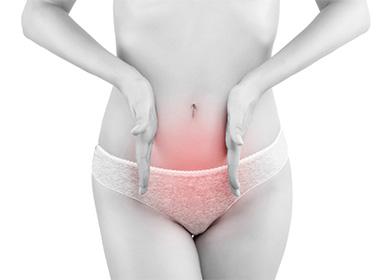The content of the article
Salpingoophoritis (from the Greek. Salping - tube, oophor - ovary) is caused by both sexual infections and conditionally pathogenic flora of the body. This is the most common cause of tubal infertility. A synonym for the concept is the term "adnexitis." For ICD-10, the disease occurs under the rubric N70.
Natural barriers to infection
Nature "took care" of women - the structure of the external and internal genital organs is carefully thought out, each fold is important. Signs of bilateral salpingoophoritis. The following barriers to adnexitis pathogens can be distinguished.
- Labia. Normally, they "close" the entrance to the vagina, thus creating a mechanical obstruction in the path of microbes. It is much easier for pathogenic microorganisms to penetrate the genitals during sexual infantilism (underdevelopment), after birth injuries, with a decreased tonus of the muscles of the pelvic floor and lowering of the body and cervix, since the integrity of this barrier is impaired.
- Vaginal mucosa. From the moment of puberty, the vaginal mucosa acquires pronounced folding. Lactic acid bacteria (Dederlein sticks) accumulate in the depressions, creating an acidic environment and preventing the growth and reproduction of pathogenic and conditionally pathogenic microbes.
- Cervical mucus. The secret of the cervix that fills the cervical canal. It contains a large number of active substances (for example, lysozyme), which are detrimental to microbes. Additionally, the mucus has a thick consistency, which creates a “cork effect”.
- Cervix. Normally, the cervical canal is almost closed and only slightly opens for the exit of menstrual flow. After a difficult birth and tearing of the cervix, performing numerous curettages, abortions, this mechanism is often violated.
What is salpingoophoritis
Inflammation can occur due to the presence of genital infections or when the opportunistic flora is activated. Among sexually transmitted infections (STIs), the following are most often detected:
- chlamydia;
- mycoplasmas;
- ureaplasmas;
- Trichomonas;
- gonococci;
- human papillomavirus and herpes simplex (HPV and HSV);
- tubercle bacillus.
Moreover, several pathogens are usually found at once, which complicates the treatment and increases the likelihood of complications. In this case, it is customary to talk about mixed infection.
In addition to specific microbes, an active inflammatory process can provoke opportunistic pathogens. Under ordinary conditions, their amount in organs and body fluids is controlled and kept to a minimum.With a decrease in immunity (for example, after an illness, hypothermia), the growth and reproduction of conditional pathogens go out of control. As a result, inflammation develops (or worsens). Therefore, it is important for women with chronic adnexitis to regularly prevent the disease and protect themselves from the effects of adverse factors. Most often, nonspecific inflammation is caused by the following pathogens:
- E. coli;
- Staphylococcus aureus;
- streptococci;
- enterococci;
- fungal microorganisms.
Risk group
Inflammation of the uterus is often diagnosed in the following groups of women:
- if there are immunodeficiency states (HIV, hepatitis);
- with frequent changes in sexual partners;
- if there is a spiral in the uterine cavity;
- with frequent hypothermia;
- after birth injuries;
- after curettage, abortion;
- if there are hormonal disorders;
- if there is diabetes.
In addition, adnexitis can be secondary - if the inflammation is "transferred" from adjacent organs, most often from the intestines. Chr salpingoophoritis can accompany the following diseases:
- acute appendicitis;
- colitis.
How does it develop
Pathogenic microorganisms enter the uterine appendages in an ascending way (from the vagina and uterine cavity). Less common is infection with blood flow, lymph. Initially, only tubes (salpingitis) or ovaries (oophoritis) are covered in inflammation - it depends on the original source. Subsequently, the infection spreads - salpingoophoritis occurs, while the pelvic peritoneum is involved (covers the genitals in the abdominal cavity), which causes increased pain.
Pathology classification
Depending on the clinical picture, varieties of inflammation of the appendages are distinguished, the data for which are presented in the table.
Table - Classification of salpingo-ophritis (adnexitis)
| Features | Variety | What is characterized by |
|---|---|---|
| By the nature of the course | Acute | - Heat; - severe pain; - symptoms of intoxication (weakness, lethargy, headache, sweating); - high risk of complications |
| Subacute | - low-grade fever; - pulling / aching pains in the lower abdomen; - more often it is an exacerbation of a chronic form |
|
| Chronic | - No temperature; - periodic pain in the lower abdomen; - Complaints related to the consequences of a chronic course (e.g. infertility) |
|
| By localization | Right side | - The pains are concentrated on the right; - signs of inflammation of one ovary are confirmed by ultrasound |
| Left side | - The pains are localized on the left; - confirmed by examination |
|
| Bilateral | The diffuse nature of pain in the lower abdomen |
Oophoritis and salpingitis are rarely separated, since the ovaries and tubes are involved in the inflammatory process together, so these processes do not have a separate classification by stages.
Symptoms
Symptoms of salpingitis and oophoritis depend on the clinical course, can be bright and almost imperceptible, “familiar”.
Acute form
Symptoms increase within a few days. Typically, women associate inflammation with the onset of menstruation, sexual intercourse, abortion, and hypothermia. The most common complaints are:
- sharp pains - the lower abdomen hurts, large on the right or on the left, pain can be given to the lower back, anus, sometimes the pain is localized in the navel;
- temperature rise - there is a fever up to 39 ° C and above, is removed when taking antipyretic tablets;
- symptoms of intoxication - weakness, lethargy, headache appear, pressure may decrease;
- nausea, vomiting - due to irritation of nerve endings and intoxication, nausea occurs, vomiting is possible, which does not bring relief;
- vaginal discharge - in the presence of genital infections, purulent, with an unpleasant odor discharge is noticeable with salpingo-oophoritis.
Chronic form
It is characterized by the presence of periods of exacerbation (subacute course) and remission. But a chronic infection affects the work of the ovaries and, accordingly, the reproductive function of a woman. During an exacerbation, the clinical picture is as follows:
- drawing pains - localized in the lower abdomen, given to the lower back, sacrum;
- temperature - normal or subfebrile;
- vaginal discharge - may bother or not, sometimes as an indicator of immunodeficiency develops thrush.
In addition, a woman often does not associate a number of symptoms with chronic adnexitis, but they are its consequence:
- menstrual irregularities - most often the duration of the cycle increases, delays occur, spotting can be more plentiful;
- decreased libido - is a consequence of imbalance in sex hormones;
- infertility - occurs against the background of anovulatory cycles, autoimmune damage to the ovaries as a result of chronic inflammation and obstruction of the fallopian tubes;
- pain during sexual intercourse - appear in the presence of adhesions and pathological formations in the pelvis.
Complications
Salpingoophorectomy is dangerous complications. Some of them require emergency surgery. The following consequences of acute and chronic adnexitis are possible.
- Adhesion process. This is one of the signs of chronic adnexitis, which can be determined during a gynecological examination. In the area of the appendages, severity, limitation of the mobility of the uterus and ovaries are revealed. Adhesive process leads to periodic pain in the lower abdomen, and can also cause constipation, stagnation of venous blood in the pelvis.
- Tubal infertility. Active inflammation leads to contraction of the lumen of the fallopian tubes, the formation of adhesions in them. As a result, a woman cannot become pregnant or she has a dramatically increased risk of ectopic.
- Autoimmune processes. Signs of oophoritis (inflammation of the ovarian tissue) are early menopause, cycle disruption and anovulation. Normally, the ovarian tissue is intact, as a result of the transferred infection, the “barrier” function of the membrane is disturbed, as a result, the immune system attacks cells that were previously inaccessible to it.
- Cyst formation. Disorders of the menstrual cycle and the concentration of pro-inflammatory enzymes in the ovaries lead to the formation of cysts, most often of a functional nature. To prevent such complications, hormone therapy courses are prescribed using conventional contraceptives.
- Accumulation of fluid in pipes. As a result of active inflammation, uterine tubes “sealed” on both sides accumulate fluid. Hydrosalpinges is formed.
- Ovarian abscesses and peritonitis. Acute inflammation may result in the formation of a tubo-ovarian mass. Most often, it includes an abscess of the ovary (or both), fallopian tubes filled with pus (piosalpinges). This is an acute surgical condition (pelvioperitonitis) requiring immediate surgery. Despite the frequent young age of girls with such complications, in order to save their lives, they have to remove the ovaries, fallopian tubes, and sometimes the body of the uterus.
Diagnostics
The diagnosis is established on the basis of a routine gynecological examination of a woman. The following is noted:
- pain on palpation of the area of the appendages;
- movements for the cervix bring the woman a sharp role.
In the presence of hydro- or pyosalpinges, pathological formations in the pelvis are determined.
If symptoms of "acute abdomen" and active inflammation in the pelvis (pelvic peritonitis) are detected, urgent hospitalization and surgical treatment are necessary. The pains are acute, high fever, the abdomen is swollen, with palpation symptoms of peritoneal irritation are noted.This is a condition that threatens the life of a woman.
Additional diagnostics include the following.
- Pelvic ultrasound. The most informative study in acute adnexitis or exacerbation of chronic. At the same time, inflammatory fluid in the pelvis, symptoms of perioophoritis (changes around the ovary, an increase in size) are noticeable. Accumulation of exudate or pus in the pipes is well defined. Often, according to an ultrasound, signs of inflammation of one of the ovaries are noticeable, but the final diagnosis (one-sided or two-sided process) is established by the gynecologist after examination. In chronic adnexitis, an ultrasound scan may show normal, often detected ovarian cysts, signs of adhesions, hydrosalpinges.
- STI screening. It should be carried out in all newly diagnosed cases of adnexitis. However, often crops and PCR studies are performed retrospectively after a course of antibacterial treatment.
- Laparoscopy. It is performed for diagnosis and at the same time surgical treatment. In acute adnexitis using laparoscopy, appendages can be removed if necessary, in chronic cases adhesions are most often dissected, patency of the fallopian tubes is determined or plastic surgery is performed.
It is always necessary to differentiate between acute and chronic salpingo-oophoritis with the diseases presented in the table.
Table - Differential diagnosis for suspected adnexitis
| Acute adnexitis | Chronic adnexitis |
|---|---|
| - Ectopic pregnancy; - rupture of an ovarian cyst; - acute appendicitis; - acute intestinal obstruction; - acute pyelonephritis; - an attack of urolithiasis | - Diseases of the spine (sciatica, hernia); - inguinal hernia; - varicose veins of the pelvis; - ovarian cancer; - uterine fibroids and pain |

Does it happen during pregnancy
Women with chronic salpingo-oophoritis with the appearance of the usual pains in the lower abdomen during pregnancy “write off” them for another acute attack. This is a priori false. During the entire period of gestation and while maintaining active lactation, inflammatory phenomena in the pelvic area, not associated with childbirth, fade. This is due to a special hormonal background. Pain in the lower abdomen, such as those that occurred during exacerbation of adnexitis, may indicate the following:
- threat of bearing;
- the beginning of childbirth, including premature birth;
- intestinal colic;
- adhesion tension with active growth of the uterus.
Conservative treatment
Treatment of salpingitis and oophoritis is prescribed in the acute period to relieve symptoms and prevent complications, and schemes are also prescribed to reduce the likelihood of relapse.
In the acute period
For treatment, the drugs presented in the table are used. The most important are antibiotics. They should be selected taking into account the alleged pathogen, preferably after microbiological culture for sensitivity. To "overlap" the entire spectrum of pathogens, several drugs are most often prescribed, especially in acute and complicated adnexitis. In most cases, oral medication is used, with a serious condition of a woman - intramuscular or intravenous injection.
Table - Schemes of drug therapy for salpingo-oophoritis
| Drug group | Drug Examples | Destination Schemes |
|---|---|---|
| Antibiotics | - "Doxycycline"; - “Unidox Solutab”; - "Vibramycin" | 100 mg twice daily for 10 days |
| "Metronidazole" | 250 mg twice daily for 7-10 days | |
| - "Azithromycin"; - "Azikar"; - “Sumamed”; - Hemomycin | - 1 g with an interval of 7 days twice; - 0.5 g once a day for 5-7 days |
|
| - "Amoxicillin"; - "Flemoxin"; - Amoxiclav | 500 mg three times a day for 7-10 days | |
| Clarithromycin | 250 mg twice a day for 7-10 days | |
| Cephalexin | 250-500 mg every 6 hours for 5-7 days | |
| Zinnat | 250 mg twice daily | |
| Vitamins | Vitamin E | 200 mg twice a day |
| Vitamin C | 100 mg 1-2 times a day | |
| - IN 1; - AT 6; - AT 2 | In complexes in medium therapeutic doses | |
| Desensitizing | Ketotifen | 1 mg twice daily |
| Anti-inflammatory and analgesic | No-shpa | 40-80 mg 2-3 times a day |
| Ketones | 10 mg 2-4 times a day |
In addition to the main treatment complex, the following procedures are prescribed:
- local sanitation - most often combined candles are used, for example, "Terzhinan"," Ginokaps ","Polygynax;
- physiotherapy - after stopping the main symptoms at the end of the course of treatment, electrophoresis with magnesium is prescribed, magnetotherapy, UHF, ultrasound;
- autohemotherapy - To strengthen immunity and increase the body's resistance, venous blood is sampled according to the scheme and immediately it is injected intramuscularly.
In remission
During remission in chronic adnexitis, oral contraceptives are prescribed. Specifically, drugs are selected taking into account the phenotype of a woman, age, concomitant diseases. Hormonal pills help to “dip” the ovaries into sleep, “quench” the inflammatory process and reduce the number of exacerbations.
In addition, enzyme preparations for the prevention of adhesions can be prescribed. For example, "Longidaza"," Wobenzym. "

Why escalates
Adnexitis is dangerous because once it occurs, it tends to constant exacerbations. The reasons for this phenomenon are hidden in the following:
- non-compliance with doctor's prescriptions - many women take medication only as long as they are in pain, “driving” the infection into a corner, and not recovering;
- the presence of provoking factors - constant hypothermia, stress, or promiscuous sexual intercourse each time will lead to the activation of opportunistic flora;
- treatment without sensitivity - the appointment of antibiotics without taking into account the sowing of flora, non-compliance with the schemes lead to the appearance of microbes resistant to any treatment;
- immunodeficiency - people with chronic illnesses, for example, HIV, leukemia, tuberculosis, are prone to infectious diseases.
Surgical treatment
The need for the operation occurs in the following situations:
- pelvioperitonitis;
- an ovarian abscess;
- hydro or piosalpinges.
In these cases, the focus of infection is removed. Most often these are fallopian tubes. Regarding the ovaries, all gynecologists adhere to the most sparing principles, since castration at a young age is a doom to infertility and lifelong hormone replacement therapy. But in advanced cases, the ovaries are completely filled with pus and there is no healthy tissue in them, so they are removed. In some cases (usually against the background of serious immunodeficiencies, such as HIV), the uterus must be removed.

ethnoscience
Widely used, but not always effective folk remedies. It is unlikely to suppress active inflammation using herbs at home. These methods are good for the prevention of exacerbations, to get rid of discomfort due to adhesions. Popular and effective recipes are as follows.
- Aloe and honey. You need to take fresh leaves of aloe and the same amount of honey. Grind the leaves or squeeze the juice. Mix with honey.Lay in the form of gauze swabs overnight for 10-14 days.
- Pine uterus and red brush. Take one tablespoon of each plant and pour a glass of vodka. Let it brew in a dark, cool place for two weeks. Then strain and take one or two teaspoons two to three times a day.
- Mix for a bathroom. It is necessary to take in equal proportions nettle leaves, flowers dandelion, leaves calendula, horsetail and mistletoe. Pour boiling water over a liter, let it brew for 30 minutes, then pour it into a warm bath and use for warming.
Despite the prevalence of adnexitis and the presence of a whole arsenal of means and methods of its treatment, more and more girls suffer from this ailment, and the tubal factor of infertility is fixed more often. Therefore, it is important to seek medical help in a timely manner, to conduct a thorough treatment of salpingitis in compliance with all doctor's prescriptions.
Reviews
Good day to all! I decided to share my so-called experience. I am 30 years old, no children, partner is permanent. A year ago I was taken to a hospital with abdominal pain, it hurt so I couldn’t walk, my stomach was swollen like a pregnant woman (I had no anxiety one night before). The diagnosis was made with inflammation of the appendages, “treated” with a course of antibiotics and droppers, lay 2 weeks after discharge, passed all the tests for infection, everything is normal ... that’s where the treatment ended. After this, the cycle went wrong, hormonal failure + 10 kg; (after about 3 months I got to the hospital again and as a result adnexitis got worse complications the inflammatory process in the tube, surgery (cleaning) for almost a month in the hospital, stabbed with antibiotics so that my lips were already blue and nauseous (I don’t exclude that she brought herself on a nervous basis) ... they told me that she had become chronic (girls who at a young age if you had such a diagnosis take it seriously, it can affect the conception of a child, complication, adhesions And so on Further.
Olga http://www.woman.ru/health/woman-health/thread/4037210/
I already have chronic ovarian inflammation as soon as I freeze or get my feet wet immediately. And all because she had already started before the first pregnancy, she was afraid to go to the doctor. Therefore, it is necessary to undergo a course of treatment. And this is unlikely to affect conception, only to be treated during pregnancy is not very good. It’s better to heal now so that there are no complications later.
Olga, Donetsk, http://www.babyplan.ru/user/4107-olga-gdonetsk/
When I was 13 years old, during a planned first examination at school, I found painful ovaries, after an ultrasound diagnosis I was diagnosed with Chronic bilateral adnexitis and LA cyst, were treated with injections of chloride, aloe, vitamin B6, B1 every other day, electrophoresis with lidase, vitamins E 2 capsules 2 r. per day, and tampons with levomikol. I don’t know whether it helped or not, but I have a feeling that I was simply not treated correctly or in the wrong way, because after the treatment the pain went away, it started again a month later, then I just stopped going to this doctor when she told me without any The tests were performed by obstruction of the tubes at age 18, I ran hysterically to a paid clinic, they took pictures of the patency with some kind of coloring matter, after that they were again treated with all kinds of antibiotics only in the clinic. When I wanted a baby with my husband, they put me on polycystosis for an ultrasound, maybe this is the result of all these treatments, but from my own experience, I can only say one thing, do not bother your legs, as exacerbations immediately begin, and the pains with them are such that they climb onto the wall hunting, they didn’t take me to the ambulance more than once. I don’t know about pregnancy, I was told that the cyst could go away during pregnancy, but they didn’t say anything about adnexitis, they didn’t say anything about adhesions either.
Tatyana K, http://www.babyplan.ru/user/6816-tatyanka-k/
I, too, aching, aching then, it seems, will cease. And then .... after a few weeks the carriage is filed - move to the hospital.Two times with an attack they took me away, the temperature was under 40, the pains were terrible in the lower abdomen and lower back. Treated for about a month. First antibiotics, then something else. In short, this case cannot be delayed, as are problems with the mammary glands.
Sonka, http://www.terrawoman.ua/forum/index.php?s=a08dbbf19bc694a39441d9ef447305fe&showuser=1822
Here, too, everything started after an abortion (according to medical indications), after I tried, it didn’t work for several months. They found a serous cyst, removed, they didn’t do histology ... though before the operation they did a puncture and sent for analysis of malignancy ... everything was ok. Then I was treated for infections, strengthened my immune system, but the ultrasound results do not go away with ultrasound ... damn it, what should I do !!!
Author, http://www.woman.ru/health/medley7/thread/4025112/

